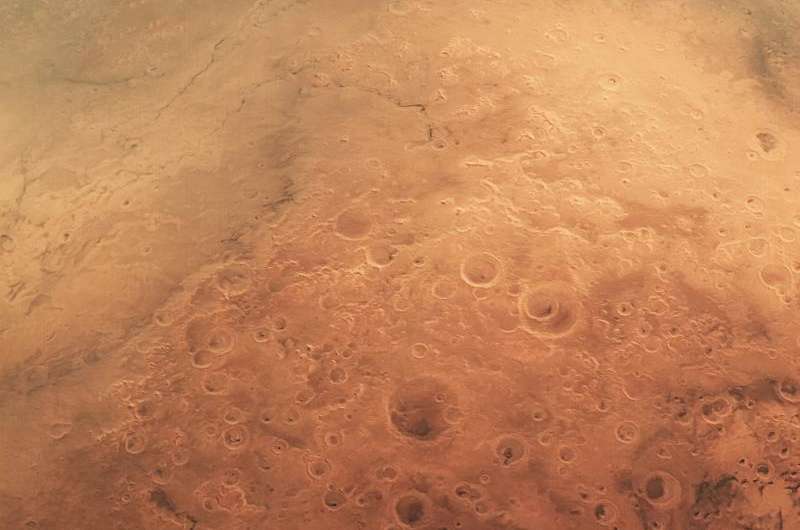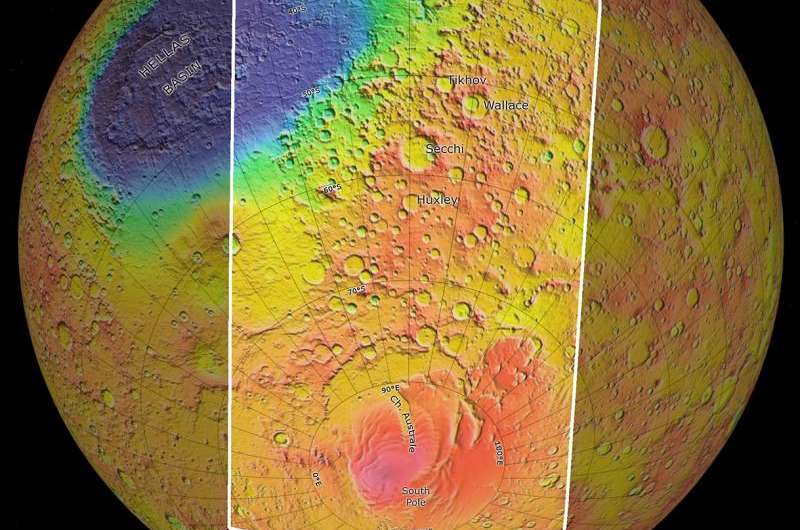Sweeping over the south pole of Mars

An unusual observation by Mars Express shows a sweeping view over the planet's south polar ice cap and across its ancient, cratered highlands.
The image was taken by the high-resolution stereo camera on ESA's Mars Express on 25 February.
During normal scientific imaging, the camera typically takes images pointing straight down towards the surface, from around the closest point to the planet along the spacecraft's elliptical orbit at an altitude of about 300 km.
But in this unusual observation, known as a 'broom calibration' image, Mars Express turned such that its camera panned over the surface far above the planet, close to its furthest point along its orbit, in this case at around 9900 km.
Importantly, as well as affording an unusual wide view, this allows the camera to record a range of features at the same illumination conditions, allowing essential calibration of the camera's sensors.
Towards the bottom of the image is the south polar ice cap, comprising frozen water and carbon dioxide ice. This feature changes in size and shape with the seasons; the main image presented here was captured during the south polar summer, but during winter the ice extends into the smooth regions that can be seen surrounding it.
The mid-section of the image corresponds to the planet's ancient southern highlands – it is covered by a high density of impact craters of varying size and states of erosion, with many craters overlapping.

Numerous patterns of dark, dusty dune deposits are also visible, swept up by wind and accumulating in impact craters and troughs.
Towards the top left of the image a portion of the giant Hellas basin can be seen. This feature spans more than 2200 km across and plunges some 8 km below the surface.
Two prominent channels – Dao Vallis and Niger Vallis – can be seen breaching the basin rim, made out as thin, dark wiggly lines in the colour image.
Hazy patches seen in the upper part of the image are attributed to clouds, while a thin, delicate layer of atmosphere follows the curvature of the planet at the horizon.
Provided by European Space Agency





















